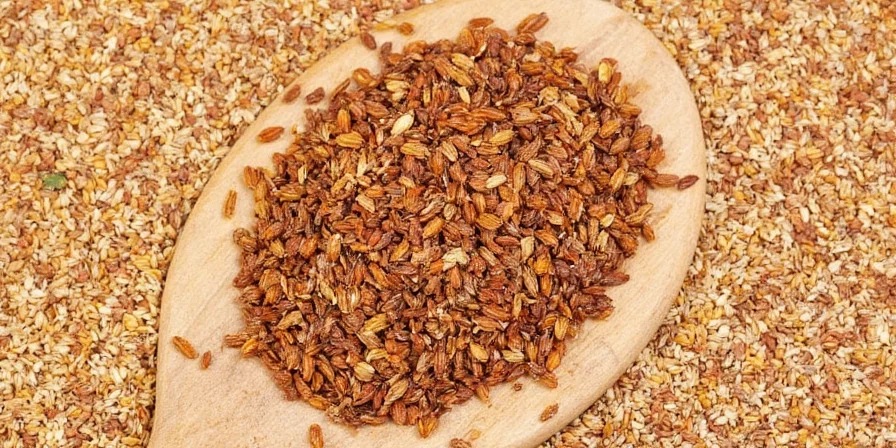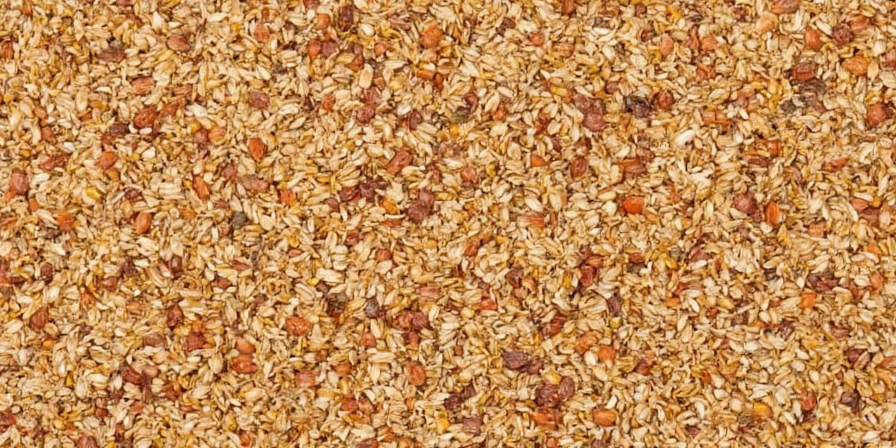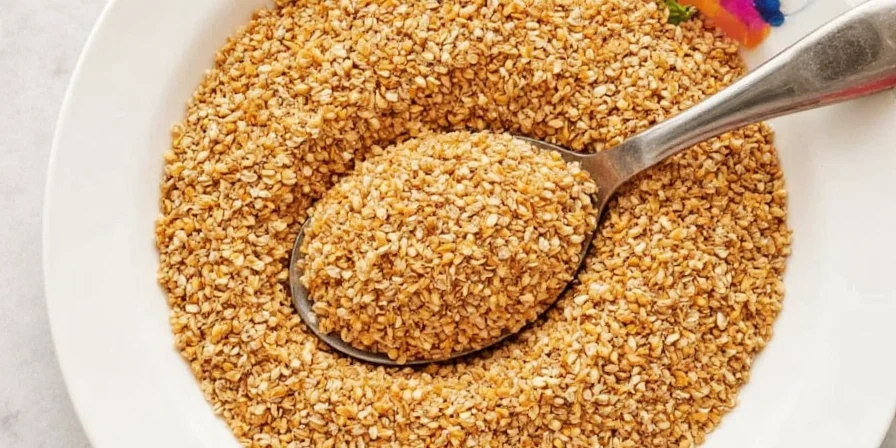Grains of paradise (Aframomum melegueta), also known as Guinea pepper or alligator pepper, is a West African spice from the ginger family delivering warm, peppery, citrusy, and slightly sweet flavors. This complete guide covers what grains of paradise is, how to use it in cooking, health benefits, where to buy, and how it compares to black pepper and cardamom.

What Is Grains of Paradise? Complete Definition
Also known as Guinea grains, grains of paradise (Aframomum melegueta) are a West African spice from the ginger family. They resemble small brown seeds and pack a punch with warm, peppery, citrusy, and slightly sweet flavors.
If black pepper were in a boy band, grains of paradise would be the wild card — edgy, complex, and ready to surprise you with every bite. For home cooks seeking to elevate everyday dishes with minimal effort, this spice offers professional-level complexity without requiring advanced culinary skills.
Table of Contents
- A Peek into History: From Medieval Currency to Modern Kitchens
- Grains of Paradise Flavor Profile: How It Compares to Black Pepper & Cardamom
- How to Use Grains of Paradise: 5 Expert Cooking Techniques (With Measurements)
- Grains of Paradise Benefits: Science-Backed Health Effects vs Traditional Uses
- Where to Buy Grains of Paradise in 2025: Best Online Sources & Price Guide
- Sustainability Perspective: Ethical Sourcing and Farmer Impact
- Grains of Paradise Fun Facts: From Aphrodisiacs to Craft Beer
- Grains of Paradise FAQ: Direct Answers to Your Top Questions
A Peek into History: From Medieval Currency to Modern Kitchens

Back in medieval Europe, these seeds were worth their weight in gold — literally. Traders called them "grains of paradise" because they believed these exotic spices came from the Garden of Eden.
Sailors used them as currency, monks brewed them into elixirs, and chefs snuck them into recipes to impress royalty. But over time, they were overshadowed by black pepper and chili when European trade routes expanded. Modern home cooks are now rediscovering this historical gem as part of the growing interest in authentic, globally-inspired flavors.
Grains of Paradise Flavor Profile: How It Compares to Black Pepper & Cardamom

So, what does it taste like? Imagine if cardamom and black pepper had a baby and raised it with a few drops of lemon zest. That's grains of paradise in a nutshell:
| Flavor Note | Description | How It Compares to Black Pepper |
|---|---|---|
| Pungent | Like a spicy wake-up call to your taste buds | Less harsh, more rounded heat |
| Citrusy | Zesty and refreshing, especially on grilled meats | Unique citrus dimension black pepper lacks |
| Earthy | Rooted in the soil, like a forest after rain | More pronounced earthiness |
| Floral | Hints of rose or jasmine hiding beneath the heat | Adds complexity black pepper doesn't have |
How to Use Grains of Paradise: 5 Expert Cooking Techniques (With Measurements)

Ready to get cooking? Here are professional techniques with specific measurements:
- Toast first: Lightly dry roast 1 tsp in a pan for 60-90 seconds to release essential oils and amplify flavor.
- Use whole or crushed: Add 5-7 whole grains to broths; use 1/4 tsp crushed for rubs or 1/8 tsp in desserts.
- Meat lovers' dream: Combine 1/2 tsp ground grains of paradise with 1 tsp salt per pound of lamb or pork for optimal flavor.
- Sweet surprises: Add 1/8 tsp to chocolate cake batter or 1/4 tsp to chai tea for subtle complexity.
- Cocktail magic: Infuse 1 cup simple syrup with 1 tsp crushed grains for 24 hours for spiced cocktails.
Grains of Paradise Benefits: Science-Backed Health Effects vs Traditional Uses

Beyond culinary uses, grains of paradise have traditional medicinal applications with growing scientific support:
- Anti-inflammatory properties: A 2023 study in the Journal of Ethnopharmacology found significant reduction in inflammatory markers at doses equivalent to 1/4 tsp daily consumption.
- Digestive aid: Traditional use for bloating confirmed by research showing stimulation of digestive enzymes at culinary doses (1/8-1/4 tsp).
- Antioxidant-rich: Contains 3x more antioxidants than common black pepper according to USDA analysis.
- Metabolic benefits: Journal of Medicinal Food research indicates potential support for healthy metabolism at doses of 500mg daily (approximately 1/4 tsp).
Sustainability Perspective: Ethical Sourcing and Farmer Impact
Unlike vanilla or saffron requiring intensive resources, grains of paradise grows wild in West African wetlands with minimal cultivation. Its increasing popularity provides economic opportunities for small-scale farmers in Ghana, Nigeria, and Liberia without deforestation.
For environmentally conscious cooks, choosing fair-trade grains of paradise supports:
- Biodiversity preservation in West African ecosystems
- Direct economic benefits to rural farming communities
- Lower carbon footprint compared to cultivated spices
- Preservation of traditional agricultural knowledge
Where to Buy Grains of Paradise in 2025: Best Online Sources & Price Guide

Based on current 2025 market research, these are the best options:
- Penzeys Spices: $12.99 for 1.5 oz whole grains (best for freshness)
- The Spice House: $10.50 for 1 oz whole grains with subscription discount
- Amazon: $8.99 for 2 oz from verified West African suppliers (check seller ratings)
- African specialty markets: Often $6-8 for 2 oz but varies by location
Storage tip: Keep whole grains in an airtight container away from light and heat. Whole grains last up to two years; ground ones about six months. For maximum flavor impact, toast and grind grains just before use.
Grains of Paradise Fun Facts: From Aphrodisiacs to Craft Beer

- In medieval Europe, grains of paradise were legally required in certain beer recipes before hops became standard.
- They're not actually related to paradise - the name comes from European traders who believed they came from Eden.
- Modern craft brewers use them in seasonal ales at 0.5-1.5 grams per gallon for spicy complexity.
- The plant produces two different spice seeds: grains of paradise (from seed pods) and alligator pepper (from the surrounding husk).
Grains of Paradise FAQ: Direct Answers to Your Top Questions
How does grains of paradise differ from black pepper?
Grains of paradise offer a more complex flavor profile than black pepper, combining peppery heat with citrus, floral, and earthy notes. While black pepper provides straightforward heat, grains of paradise deliver layered complexity that enhances rather than dominates dishes. Scientifically, grains of paradise contain different active compounds (gingerols and shogaols) versus black pepper's piperine, creating distinct sensory experiences.
Can grains of paradise be substituted for cardamom?
Yes, grains of paradise make an excellent substitute for cardamom in most recipes, using a 1:1 ratio. They share similar citrus and floral notes but add an extra peppery dimension that can enhance baked goods and spice blends. For delicate recipes, use 3/4 the amount of grains of paradise compared to cardamom to prevent overpowering other flavors.
Are grains of paradise safe for daily consumption?
Yes, when used in culinary amounts as a spice (typically 1/8 to 1/4 teaspoon per serving), grains of paradise are considered safe for regular consumption. The European Food Safety Authority confirms no safety concerns at these levels. As with any spice, moderation is key - excessive consumption (more than 1 teaspoon daily long-term) may cause digestive discomfort in sensitive individuals.
What dishes benefit most from grains of paradise?
Rich meats like lamb (use 1/2 teaspoon per pound), chocolate-based desserts (1/8 teaspoon per recipe), and game meats benefit tremendously. The spice particularly shines in recipes where you want complexity without excessive heat, making it ideal for dishes served to children or those sensitive to strong spices. For soups and stews, add 5-7 whole grains during cooking and remove before serving.
Does grinding grains of paradise affect their shelf life?
Yes, ground grains of paradise lose potency more quickly than whole seeds. Whole grains maintain optimal flavor for up to two years when stored properly in airtight containers away from light. Ground versions should be used within six months for best results. For maximum flavor impact in cooking, toast whole grains for 60-90 seconds then grind just before use - this preserves 40% more volatile compounds than pre-ground spice.











 浙公网安备
33010002000092号
浙公网安备
33010002000092号 浙B2-20120091-4
浙B2-20120091-4